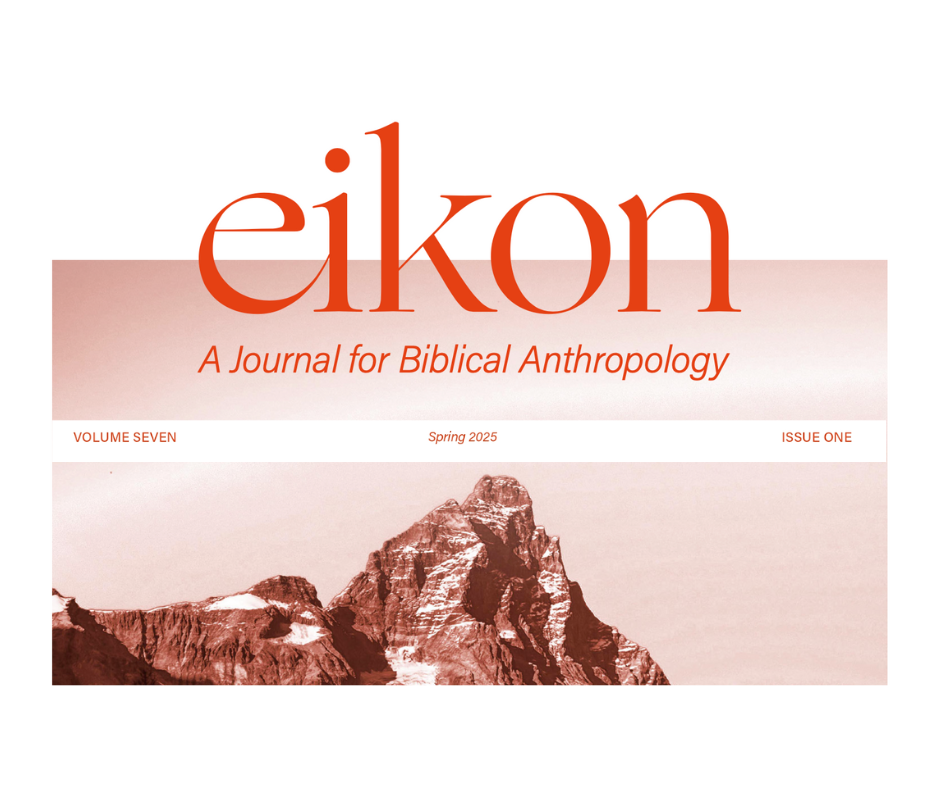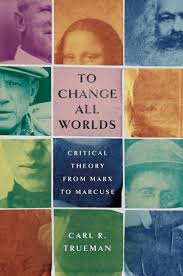Book Review: “To Change All Worlds: Critical Theory from Marx to Marcuse”
By: Robert Lyon

Editor’s Note: The following review appears in the Spring 2025 issue of Eikon.
Carl Trueman. To Change All Worlds: Critical Theory from Marx to Marcuse. Brentwood, TN: B&H Academic, 2024.
My family and I recently collected around eight gallons of sap from the maple tree in our backyard. After boiling it all down, we had only a pint or two of maple syrup — it was delicious. While not maple syrup — and not quite as tasty — To Change All Worlds: Critical Theory from Marx to Marcuse is nonetheless a masterfully concise treatment of almost two hundred years of complex and often enigmatic social thought. Carl Trueman, Professor of Biblical and Religious Studies at Grove City College, has performed the laborious process of “boiling down” gallons of Critical Theory, leaving us with a compelling historical account, reminiscent of his excellent The Rise and Triumph of the Modern Self. In what follows, I will offer a brief and selective summary of Trueman’s historical work and then offer what I hope is a modest supplement to his overall thesis.
Summary
Trueman begins his history of Critical Theory (henceforth CT) by suggesting what he sees as the central problem with CT, namely its anthropology (5). He lays the philosophical groundwork in the first two chapters with a succinct genealogy spanning a two hundred year period of four thinkers. In the second chapter, Trueman highlights the main contributions of G.W.F. Hegel (1770–1831) and Karl Marx (1818–1883), then transitions to Karl Korsch (1886–1961) and György Lukács (1885–1971) in Chapter 3. Working through these figures underscores the fundamentally Marxist element of CT, which relies upon an Hegelian, conflict-centered historicism.
We then join Trueman in 1923, so to speak, as he walks us through the doors of the newly established Institute of Social Research at Goethe University in Frankfurt (i.e., the “Frankfurt School”). Trueman first works out the implications of Max Horkheimer’s simple classification of “traditional theory” (e.g. a totalizing system, like Christianity or the Enlightenment) versus “critical theory,” a theory that is active and subversive, uncovering the social conditions which undergird the perpetuation of “traditional theories.” He then summarizes Horkeimer’s critique of the Enlightenment (with Theodore Adorno) in Chapter 5, which inculcates the critical (and indeed, familiar) inquiry: Whose interests are being served by any given ideology? And how can we cultivate a revolutionary consciousness to overthrow its privileged oppressors?
Next we meet Theodore Adorno and Herbert Marcuse, in Chapters 6 and 7 respectively. In these men, we discover a major force for the sexual revolution, as well as a severe critic of the “the cultural industry.” Marcuse’s Marxist appropriation of Freud led him to declare that “sexual codes and theories are…deeply political and embedded in the history of oppression and intimately connected to the way the values of society, with all of its unjust, oppressive structures, are internalized” (173). Adorno, for his part, was not as infatuated with the role sexual pleasure played in revolution, but was absorbed by the way “the culture industry” turned individuals into passive, entertained consumers who, as a result, acquiesce to the status quo (196–202).
Finally, Trueman concludes by offering an analysis of CT, which supplements his insightful postscripts throughout the book (74–77; 108-110; 142–144; 177–180; 212–214). While Trueman is convinced that CT can reveal something of the brokenness of the human condition, he offers a refreshing “No” regarding its potential usefulness as a tool for Christians (222). Now, I anticipate some may quibble with Trueman’s practical proposals, which include an implication that CT “has no stable political loyalties” (223) and that the church’s primary posture should be one of demonstrating the authenticity of the Chrsitian faith in the community of the church (76–77; 214; 224–227), given CT’s inhospitable posture toward logic and reasoning. But this in no way should overshadow the usefulness of Trueman’s thorough historical treatment.
Critical Engagement
With that whole-hearted recommendation and selective summary in hand, I want to shift to defending a modest thesis: while the anthropological crisis in CT is alarming and completely true, I want to suggest that there is an even deeper crisis.
An Anthropological Crisis — Yes, But Even Deeper. Trueman ably demonstrates how early CT gave rise to so many contemporary manifestations of anthropological madness, namely queer theory, critical race theory, feminism, transgenderism, the disruption of the nuclear family,[1] and even the brazen attempts to question the rights of parents with their children. So, while one cannot doubt that there is anthropological upheaval at the heart of CT’s revolutionary program, I want to take a moment to point out that there is a subtext in To Change All Worlds that points to an even deeper crisis. This crisis in anthropology is downstream of a crisis in both metaphysics and epistemology and its inherent striving after a religious worldview.
Metaphysics. Trueman rightly makes much of the anti-essentialist impulse originating in Marx’s anthropology (25, 144).[2] But fundamentally, this is a metaphysical claim, which we see picked up by Lukács in his notion of reification, that is, “the ascription of objective reality and intrinsic power to things that are really social relations” (62). Reality, in CT, has no inherent structure that might inform our anthropology. There is no authoritative givenness, no “grain” to creation which is in our best interest to follow.
Epistemology. And alas, if reality has no objective meaning or essence to discover, outside of social relations, one’s theory of knowledge, or epistemology, takes a major hit. The epistemological orthodoxy of CT is what we see emerge in Korsch, who abandoned the correspondence theory of truth. Truth is no longer determined by whether a proposition corresponds with the “objective world.” Instead, “truth values are determined by whether a particular idea or claim furthers the revolutionary cause” (54). A “revolutionary consciousness” is their goal — one that can “see” (or, in today’s sophisticated parlance, is woke).
An Alternative Religion. Finally, readers of Trueman’s book would benefit from recognizing that, per Bradley Green: “Critical Theory is in effect an alternative theology or religion.”[3] Aside from its issues with reality and truth, CT’s notion of alienation and false consciousness, revolutionary liberation from oppressive ideologies, and eschatological hope in a perfected humanity evince a perversion of almost every Christian doctrine. CT’s “historicism and deep suspicion of essentialism prohibits it from articulating a clear anthropology that then prevents it from offering a cogent view of the future in anything more than hopeful pieties” (178–179). Simply put, as Christians, we set firmly in place our relation to God as the Creator (metaphysics) and the authority of his revelation (epistemology), which then informs our answers to the “central challenges to human existence identified by the critical theories.” All of these are, as Trueman notes, gloriously resolved in Christ (226). Critical theorists reverse this relationship: their groundless anthropology is what shapes their view of fundamental reality, truth, and society. It is therefore a total and purposeful subversion of one’s posture to the world. This, I think, is the deeper crisis at play.
Conclusion
In The City of God, Augustine describes some of his contemporaries as those “hardened by the habit of contradiction.”[4] In our contemporary context, critical theories are the fashionable contradictions ossifying in Western society. Given Trueman’s level-headed and careful exegesis of the primary sources, much of which he describes as “impenetrable gibberish” (114), we should consider this work a treasure. So, if you are looking for a short, go-to introductory guide to grasp the origin and complexities of CT and discover its vivid manifestation in contemporary culture and politics, this book will serve you well.
[1] One of BLM’s stated goals in 2020 was to “disrupt the Western-prescribed nuclear family structure.” To see an archived version of this statement, visit: https://web.archive.org/web/20200408020723/https://blacklivesmatter.com/what-we-believe/. Although BLM removed this statement from their website, it was likely only done to squelch a controversy rather than demonstrate repentance for a false belief. In my judgment, the statements made on that page almost certainly still represent the beliefs of the founders and many self-conscious activists of the BLM movement.
[2] Karl Marx wrote, in his sixth thesis in On Feuerbach, that “the essence of man is no abstraction inherent in each single individual. In reality, it is the ensemble of social relations.”
[3] Bradley G. Green, “Critical Theory and the Gospel,” American Reformer, July 26, 2022, https://americanreformer.org/2022/07/critical-theory-and-the-gospel/.
[4] Augustine, City of God, II.1, New Advent, https://www.newadvent.org/fathers/120102.htm.
